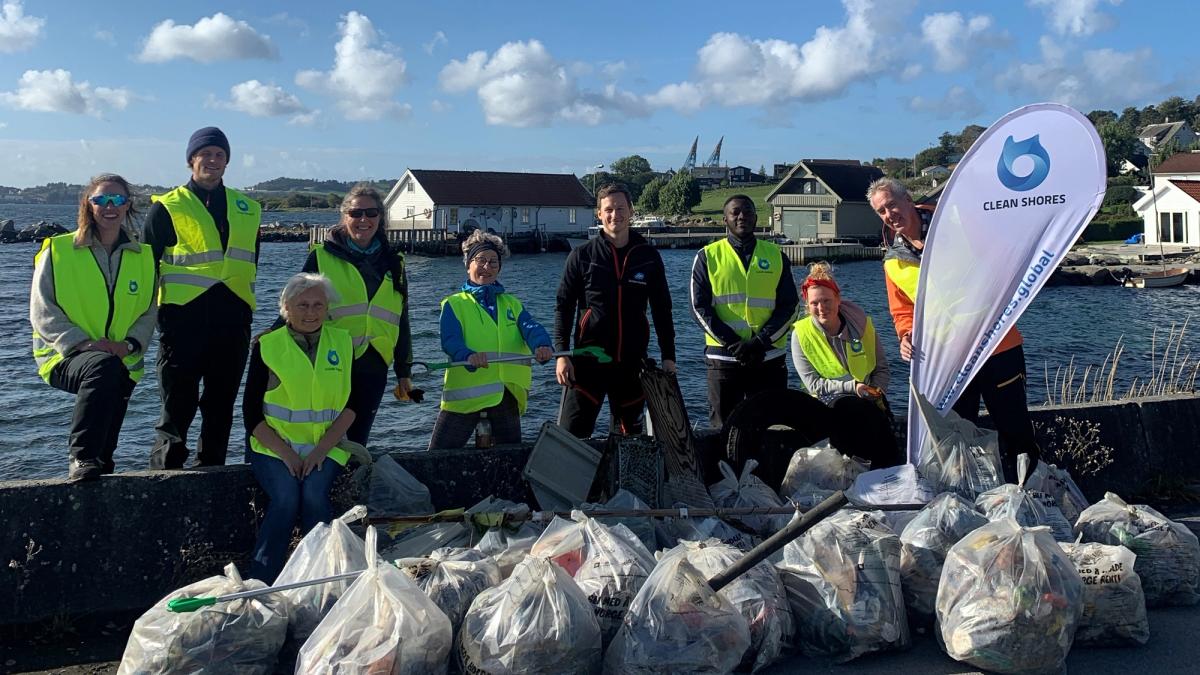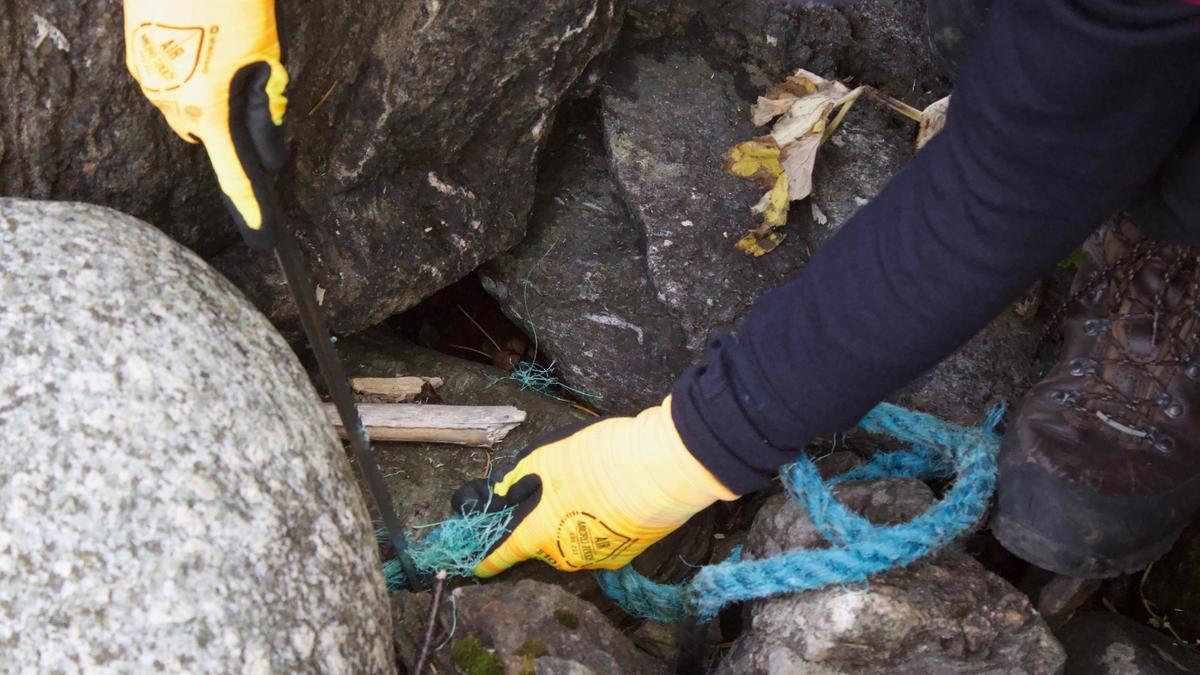At the start of October 2021, the project participated in two missions in Rogaland organised by Clean Shores and Ryfylke Outdoor Council. There was one type of waste that stood out in the two clean-up areas – reinforcement fibre.
This autumn, the national beach clean-up project will participate in clean-up operations in four different counties. The aim is to map, observe and form the basis for thematic reports on the logistics of clean-up operations and the role of the County Governor in the clean-up of marine litter. Two clean-up areas were selected in Rogaland. One was urban. The other was Lundar Island off the coast of Stavanger.
Embankment edge covered in plastic
In a residential and commercial neighbourhood in Bru just off the coast of Stavanger, waste was cleared from an embankment edge facing the sea. The waste that had accumulated at the edge of the embankment was not visible from the road, but it was visible when looking up towards the embankment, where the sea had washed plastic and waste up between the stones for many years. Large volumes of plastic, packed closely together between the stones, were retrieved. Much of the plastic, which consisted of rope fragments, reinforcement fibre, extension leads and packaging, had become porous after years of being exposed to weather conditions.

One island, two different clean-up situations.
Ryfylke Outdoor Council arranged a clean-up mission on Lundar Island just off the coast of Stavanger. In order to access the island, the clean-up team from Clean Shores, Ryfylke Outdoor Council, students from the master’s degree programme in Energy, Environment and Society at the University of Stavanger and other volunteers were transported using rib boats and the Archipelago Service’s own boat, Ry-Fri. Ry-Fri was also used to transport waste from the island to Stavanger.


On one side of the island, participants cleared pebble beaches and the surrounding green spaces, which consisted of grass, heather, brushwood and trees. There were large amounts of rope and extension leads trapped between the stones on the beach. Further up in the terrain, lighter plastic products such as jugs, polystyrene and bottles could be found.
On the other side of the island, large amounts of reinforcement fibre were found. A lot of this had become deeply embedded in the soil and removal was difficult.
There were large amounts of road construction waste found in this area.
– It’s unusual to see such a large amount of reinforcement fibre and extension leads in nature,” says Project Manager Mads Homleid Busvold.
User testing of Rent hav
The project also conducted user testing of Rent hav during the clean-up operation in Stavanger. Maria Antonsen is pleased to have had the opportunity to work closely with those who will be using the tool, now that the centre is responsible for its development.
– We received a lot of feedback on the beta version of Rent hav from Ulrik Håheim Johnsen at Ryfylke Outdoor Council. We are completely dependent on being able to interact with those who participate in clean-up operations to develop a tool that makes a useful contribution to their efforts on marine litter.
The experiences gained from the national beach clean-up project this autumn will be summarised and included in a thematic report that will be presented during the autumn of 2022.



